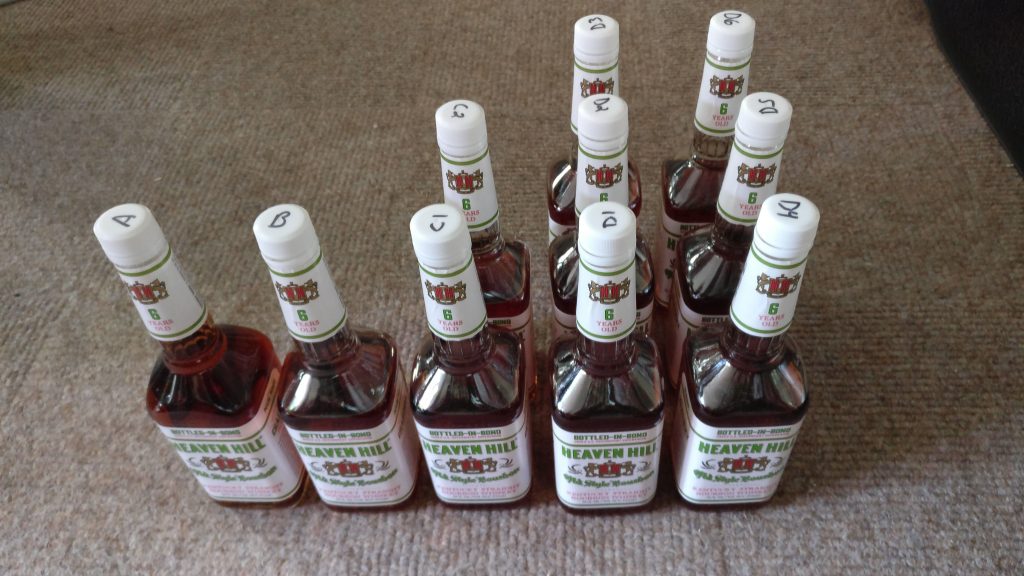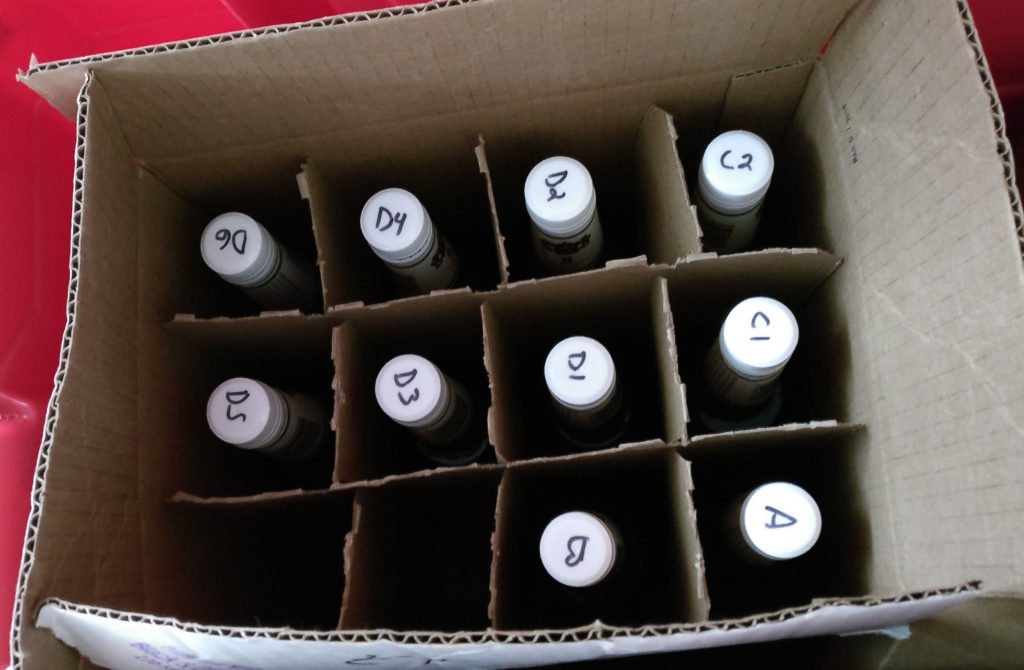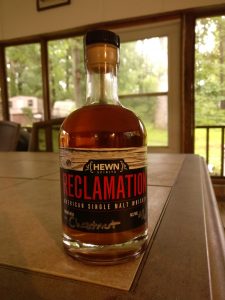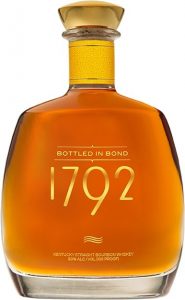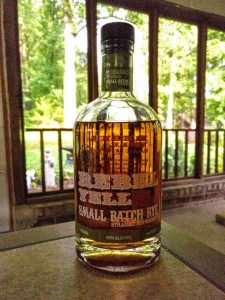Experiment: Once opened, does whiskey go bad over time?
“Bad” is highly subjective, and can mean many things. If you mean does it become unsafe to drink, I’d say that if it is stored properly (room temperature, out of direct sunlight) and in a glass bottle with a decent enclosure – than probably not. If you mean does it taste like crap if you leave a couple pours in a bottle for many years . . . well . . . let’s find out!
There are a lot of different thoughts on this. Conventional wisdom is that oxidation will certainly change the flavor of whiskey over time. I’ve heard multiple reports that the end result isn’t good – while also hearing folks talk about a bottle “opening up over time” and improving. In both scenarios – folks report some change, which isn’t a surprise as oxidation is one of the forces altering a whiskey’s character as it ages in the barrel (and if you’ve been fortunate to sip some fine, really old Scotch; there’s something magical about what time does to the spirit!) But – how much influence is from oxidation over time – who knows.
One challenge is if you have a bottle that’s pretty low, and it sat for several years that way, likely you don’t have one that is full to compare it to. Sure, if it is available you could go and buy one, but while the consistency in whiskey is laudable, if you’re pulling a bottle today – who is to say if it is the same as one bottled many years ago.
This seems like a question ripe to be answered with an experiment, which means not only having some whiskey spend time in partially full containers (a lot of time), but having a control sample to compare to. Thankfully, time (hopefully!) is something I have, so why not!
What I’m looking to uncover is:
- Does a whiskey materially/substantially change if left for years in a bottle that is . . .
- 60% full?
- 30% full?
- 10% full?
- IF it does change, does that change vary in the above scenarios?
- IF it does change, how has it changed? (is it more woody, less sweet, more astringent, etc)
Taste is individually subjective and highly variable. Hell, in most reviews where multiple apostles provided their take, they were different. The key to this experiment is having enough whiskey at these varying levels to get multiple opinions on each. A 10% full bottle is just under 2.5 oz (75 mL), so taking one such bottle – you wouldn’t have much of a sample to get multiple tasting impressions. And by multiple tasting impressions – I’m talking about the impressions of multiple TASTERS. Any one opinion is just that, but wouldn’t it be interesting to see if there is any consensus on the effect over time?
To have enough volume of whiskey that aged for some period of time with only 10% left means . . . yeah, a lot of bottles. And a lot of bottles means selecting something that I can buy in bulk all at once without having to sell an organ. Thinking about that prior to a trip to Kentucky this spring, the selection seemed obvious: Heaven Hill 6 Year Bottled-In-Bond. This is a delicious bourbon at a respectable age and proof, and all for only $13 a bottle (my only complaint is that I can’t get this in Atlanta!)
Here’s the setup:
I bought 10 bottles all from the same store at the same time (so as close to the same “batch” as I could reasonably get). Those have been split into four different groupings:
Group A: Control. This bottle will sit in the same box with the rest, but will remain unopened until the end.
Group B: 60% Full. This bottle will be opened, and I’ll pour out 2 oz a week until there is roughly 450 ml left in the bottle.
Group C: 30% Full. Two bottles (C1 & C2) will be opened, and I’ll pour out 2 oz a week until there is roughly 225 mL left in each bottle. Why two bottles? This provides 450 mL of whiskey that has sat in a 30% full bottle for the allotted period of time (which is roughly 15 oz).
Group D: 10% Full. Six bottles (D1 – D6) will be opened, and I’ll pour out 2 oz a week until there is only 75 mL left in each bottle. Six bottles with 75 mL will provide 450 mL of whiskey that sat in a 10% full bottle.
Just a quick note – when I say “pour out”, I’m not “throwing away” any bourbon (no whiskey will be harmed in this experiment!) All of the excess that is poured out is being decanted into other empty bottles. That’s leaving me with a lot of HH 6yr BIB, but I’m confident that I’ll think of something to do with it.
All of these bottles will be stored in a box in my (finished) basement, out of any direct sunlight. Once they hit their target fill levels, I won’t open them again for . . . I’m not sure? 2 years seems like long enough, but we’ll see what is going on in 2 years. I’m open to comments/thoughts/suggestions on the timing (or other facets of the experiment). When the experiment does “end”, I’ll decant the two Group C bottles into 1, and the six Group D bottles into 1, so I’ll have 4 bottles – the control, and 3 bottles with about 450 mL left.
After decanting, I’ll gather some whiskey friends to help with the measurement step. I’d conduct a blind-tasting, asking each participant to complete an ‘assessment form’. This will be tricky, and I don’t have it nailed down yet (thankfully have a couple of years to figure it out!) I want to have quantitative measurements of each sample on different aspects. For example – maybe a 10 point scale across things like “Oaky”, “Caramel”, “Vanilla”, “General Sweetness”, “Bitterness”, etc. Whether one person picks a 7 and another picks a 4 on the same sample/aspect isn’t necessarily important. The key is if there seems to be any consensus on what changes (is anything increasing or decreasing in terms of taste, mouthfeel, etc).
I want to avoid “better” or “worse” since that is highly subjective to each person’s preference (although will allow open comments on each sample from each participant). If the sweeter notes are less pronounced, it might be that it seems more oaky over time – which some may like and others may dislike. And it may be that the difference is perceived quite differently across the board.
If you have suggestions, please feel free to share in the comments. And remember to check back in a few years 🙂
Cheers!
Gary
Experiment: Once opened, does whiskey go bad over time? Read More »


